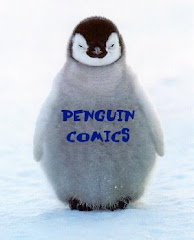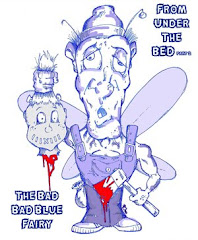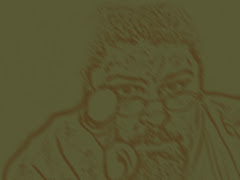SPIDERMANSPIDERMANSPIDERMANSPIDERMANSPIDERMAN
10) MARK BAGLEY

A couple of years into Marvel's New Warriors run, New Warriors editor Danny Fingeroth became responsible for the Spider-Man line of titles. At the same time, Erik Larsen vacated his spot as penciler on Spider-Man’s flagship title The Amazing Spider-Man.
Fingeroth decided to take a chance on Bagley, who was a relatively inexperienced artist to be assigned what is arguably Marvel’s flagship title. After a rough start, Bagley hit his stride on The Amazing Spider-Man and eventually grew to be considered the definitive Spider-Man artist of the mid-1990s. His artwork was used extensively for licensed material, appearing on everything from plates and cups to credit cards.
Bagley also holds the distinction of being the artist on Marvel’s first web-based comic book, featuring Spider-Man, which appeared on Marvel’s official website.
9) JAE LEE

Jae Lee was born in South Korea and emigrated with his family to the United States at age six. He attended art school, but left in 1990 to pursue a career at Marvel Comics.
Lee first rose to prominence in the industry for his work on Marvel's Namor the Sub-Mariner, Inhumans (for which he won an Eisner Award), The Sentry, and Spider-Man as well as his creator-owned character Hellshock at Image Comics.
Lee is currently working on the Marvel Comics' spin-off of Stephen King's The Dark Tower novels, The Dark Tower: The Gunslinger Born, which is written by Robin Furth and Peter David.
8) ART ADAMS

Art Adams was born on April 5, 1963 in Holyoke, Massachusetts, and dreamed of becoming a comic book illustrator from a very early age, largely teaching himself the skills he would later use. He became a fan favorite when he penciled the critically-acclaimed Longshot miniseries, written by Ann Nocenti and published in 1985 by Marvel Comics. Adams' highly distinctive and detailed artwork gained him considerable popularity and he found it easy to find further work in the field. However, due to the labor-intensive nature of his detailed art, Adams found it difficult to meet the short deadlines often found in the comics industry. This has led to him to pursue work for shorter projects such as miniseries, specials, and annuals rather than pursuing work for ongoing comic book series. Exceptions to this include a 1989 two-issue run on X-Factor, and a 1990 three-issue run on The New Fantastic Four (featuring The Hulk, Wolvering, SPider-Man and Ghost Rider). He also had a ten-issue run on Tom Strong's Terrific Tales (2002-2004), which being an anthology, required only eight pages from him for each issue. Adams has also created numerous character spread posters featuring nearly everyone in either Marvel or DC's universe.
7) ERIC LARSEN

Eric Larsen replaced Todd McFarlane on Amazing Spider-Man with issue #329, having previously penciled issues 287, 324, and 327). With writer David Michelinie and Larsen the series experienced increasing sales, with stories such as "The Cosmic Spider-Man", "The Return of the Sinister Six" (#334-339), and "The Powerless Spider-Man" (#341-343). He left the title with #350, leaving it to series mainstay Mark Bagley with #351. Larsen again succeeded McFarlane on Spider-Man, where he wrote and drew the six-issue story arc "Revenge of the Sinister Six" (#18-23).
Seeking greater control and profit over the work they created, he and six other illustrators abandoned Marvel to form Image Comics, where Larsen launched a series featuring the Savage Dragon. Though he continues to write and illustrate The Savage Dragon, Larsen has occasionally returned to Marvel to write and illustrate, on titles such as Fantastic Four, The Defenders, Wolverine, and Nova.
6) JOHN BYRNE

Byrne's first encounter with Marvel Comics was in 1962 with Stan Lee and Jack Kirby’s Fantastic Four #5. He later commented that "the book had an 'edge' like nothing DC was putting out at the time". Jack Kirby’s work in particular had a strong influence on Byrne and he has worked with many of the characters Kirby created or co-created. Besides Kirby, Byrne was also influenced by the naturalistic style of Neal Adams. Byrne’s first story for Marvel Comics was "Dark Asylum" (plotted by Tony Isabella and written by David Anthony Kraft), published in Giant-Size Dracula #5 (June 1975). He began drawing Marvel’s lower-selling titles, including Iron Fist, The Champions, and Marvel Team-Up. For many issues, he was paired with writer Chris Claremont, with whom he also teamed up for some issues of the black-and-white Marvel magazine Star-Lord (inked by Terry Austin, who soon after teamed up with Claremont and Byrne on X-Men). Byrne is also equally as famous for doing fantastic cover art, including many for SPider-Man.
5) GIL KANE

In the late 1950s, Kane freelanced for DC Comics. There he contributed to seminal works in what fans and historians call the Silver Age of comic books, when he illustrated a number of revitalized superhero titles (loosely based on 1940s characters) — most notably Green Lantern, for which he pencilled most of the first 75 issues, and also the Atom. Kane also drew the youthful superhero team The Teen Titans, and in the late 1960s tackled such short-lived titles such Hawk and Dove and the licensed-character comic Captain Action, based on the action figure. He briefly freelanced some Hulk stories in Marvel Comics' Tales to Astonish, under the pseudonym Scott Edwards.
Eschewing that pseudonym, Kane freelanced in the 1960s for Tower Comics' T.H.U.N.D.E.R. Agents, a superhero/espionage title. Kane then found a home at Marvel, eventually becoming the regular penciller for The Amazing Spider-Man, succeeding John Romita, in the early 1970s, and becoming the company's preeminent cover artist through that decade.
4) STEVE DITKO

After Marvel Comics editor-in-chief Stan Lee obtained permission from publisher Martin Goodman to create a new "ordinary teen" superhero named "Spider-Man", Lee originally approached his leading artist, Jack Kirby. Kirby told Lee about his own 1950s character conception, variously called the Silver Spider and Spiderman, in which an orphaned boy finds a magic ring that gives him superpowers. Comics historian Greg Theakston says Lee and Kirby "immediately sat down for a story conference" and Lee afterward directed Kirby to flesh out the character and draw some pages. "A day or two later", Kirby showed Lee the first six pages, and, as Lee recalled, "I hated the way he was doing it. Not that he did it badly — it just wasn't the character I wanted; it was too heroic".
Lee turned to Ditko, who developed a visual motif Lee found satisfactory, although Lee would later replace Ditko's original cover with one penciled by Kirby. Ditko said,
“ "The Spider-Man pages Stan showed me were nothing like the (eventually) published character. In fact, the only drawings of Spider-Man were on the splash [i.e., page 1] and at the end [where] Kirby had the guy leaping at you with a web gun... Anyway, the first five pages took place in the home, and the kid finds a ring and turns into Spider-Man.”
Ditko also recalled that,
“ One of the first things I did was to work up a costume. A vital, visual part of the character. I had to know how he looked ... before I did any breakdowns. For example: A clinging power so he wouldn't have hard shoes or boots, a hidden wrist-shooter versus a web gun and holster, etc. ... I wasn't sure Stan would like the idea of covering the character's face but I did it because it hid an obviously boyish face. It would also add mystery to the character....”
Much earlier, in a rare contemporaneous account, Ditko described his and Lee's contributions in a mail interview with Gary Martin published in Comic Fan #2 (Summer 1965): "Stan Lee thought the name up. I did costume, web gimmick on wrist & spider signal". Additionally, Ditko shared a Manhattan studio with noted fetish artist Eric Stanton, an art-school classmate who, in a 1988 interview with Theakston, recalled that although his contribution to Spider-Man was "almost nil", he and Ditko had "worked on storyboards together and I added a few ideas. But the whole thing was created by Steve on his own... I think I added the business about the webs coming out of his hands"
3) JOHN ROMITA

At Marvel, Romita returned to superhero penciling after a decade working exclusively as a romance-comic artist for DC. He felt at the time that he no longer wanted to pencil, in favor of being solely an inker:
“I had inked an Avengers job for Stan, and I told him I just wanted to ink. I felt like I was burned out as a penciler after eight years of romance work. I didn't want to pencil any more; in fact, I couldn't work at home any more — I couldn't discipline myself to do it. He said, 'Okay,' but the first chance he had he shows me this Daredevil story somebody had started and he didn't like it, and he wanted somebody else to do it". "[He] showed me Dick Ayers' splash page for a Daredevil [and] asked me, 'What would you do with this page?' I showed him on a tracing paper what I would do, and then he asked me to do a drawing of Daredevil the way I would do it. I did a big drawing of Daredevil ... just a big, tracing-paper drawing of Daredevil swinging. And Stan loved it.”
Romita began a brief stint on Daredevil beginning with issue #12, initially penciling over Jack Kirby's dynamic layouts as a means of learning Marvel's storytelling house style. It proved to be a stepping-stone for his famed, years-long pencilling run on The Amazing Spider-Man. "What Stan Lee wanted was for me to do a two-part Daredevil story [#16-17, May-June 1966] with Spider-Man as a guest star, to see how I handled the character".
Coming to The Amazing Spider-Man as successor of Spider-Man co-creator Steve Ditko, Romita initially attempted to mimic Ditko's style, but brought his own clean, soap operatic style of illustration to the book, and made the character his own.
2) TODD MCFARLANE

McFarlane's first published work was a 1984 backup story in Epic Comics' Coyote. He soon began working for both Marvel and DC Comics. He illustrated several issues of Marvel's Incredible Hulk and DC's Infinity Inc. and various Batman series. In 1988, McFarlane joined writer David Michelinie on Marvel's The Amazing Spider-Man beginning with issue 298. McFarlane also helped create Venom, a wildly popular villain. (Director Sam Raimi came to McFarlane for the initial sketches of Venom for the Spider-Man 3 movie.)
McFarlane's work on Spider-Man turned him into an industry superstar. In 1990, after a 28-issue run of Amazing Spider-Man, McFarlane told editor Jim Salicrup he'd grown tired of drawing other peoples stories and would be leaving the book with issue 328 to write his own work. Jim offered Todd a new Spider-Man book prompting the launch of a new monthly series, simply called Spider-Man, which McFarlane both wrote and illustrated. Spider-Man #1 sold 2.5 million copies, partially due to the variant covers that were used to encourage collectors into buying more than one edition. Issue 16 saw the replacement of editor Jim Salicrup with Danny Fingeroth. McFarlane wrote and illustrated the first 14 and issue 16 of Spider-Man before leaving the book altogether due to creative clashes with the new editor. Many issues were crossovers with characters such as Wolverine, X-Force and the Ghost Rider.
1) JACK KIRBY

In 1962, with the success of the Fantastic Four and other stars, Marvel Comics editor and head writer Stan Lee was casting about for a new superhero idea. He said that the idea for Spider-Man arose from a surge in teenage demand for comic books, and the desire to create a character with whom teens could identify. In his autobiography, Lee cites the non-superhuman pulp magazine crime fighter The Spider as an influence, and in a multitude of print and video interviews Lee stated he was further inspired by seeing a fly climb up a wall—adding in his autobiography that he has told that story so often he has become unsure of whether or not it is true.[4] Jack Kirby claimed Lee had minimal involvement in the character's creation, and that the idea for Spider-Man had originated with Kirby and Joe Simon, who in the 1950s had developed a character called The Silver Spider for the Crestwood comic Black Magic, who was subsequently not used. Simon, in his 1990 autobiography, disputes Kirby's account, asserting Black Magic was not a factor, and that he (Simon) devised the name "Spider-Man" (later changed to "The Silver Spider"), while Kirby outlined the character's story and powers. Simon later elaborated that his and Kirby's character conception became the basis for Simon's Archie Comics superhero The Fly. Artist Steve Ditko stated that Lee liked the name Hawkman from DC Comics, and that "Spider-Man" was an outgrowth of that interest. The hyphen was included in the character's name to avoid confusion with DC Comics' Superman.










 Stumble It!
Stumble It!















See, I would have given number one slot to Ditko. Kirby was alright, but Ditko really GOT Spider Man
ReplyDeletewhat about Ross Andru ?
ReplyDeletePeople might not agree with this, but my number one Spiderman artist is John Romita Jr, so I kinda missed him on the list. Still, that's just in my opinion :)
ReplyDeleteThis is a very, very bad list
DeleteTrue. Jack Kirby, Jae Lee, amd Art Adams barely drew Spidey. If you want a good list, search top 25 spiderman artists and creators.
DeleteThis list SUCKS
ReplyDeleteARE YOU KIDDING ME?!?
JACK KIRBY NUMBER 1?!?
MY OFFICIAL LIST OF GREATEST ARTIST OF SPIDER MAN
10-Jack Kirby
9-Steve Ditko
8-Gil Kane
7-Jae Lee
6-Erik Larsen
5-John Romita Sr and Jr
4-Ross Andru
3-John Byrne
2-Mark Bagley
and the number #1 spider man artist of all time
1-Todd McFarlane